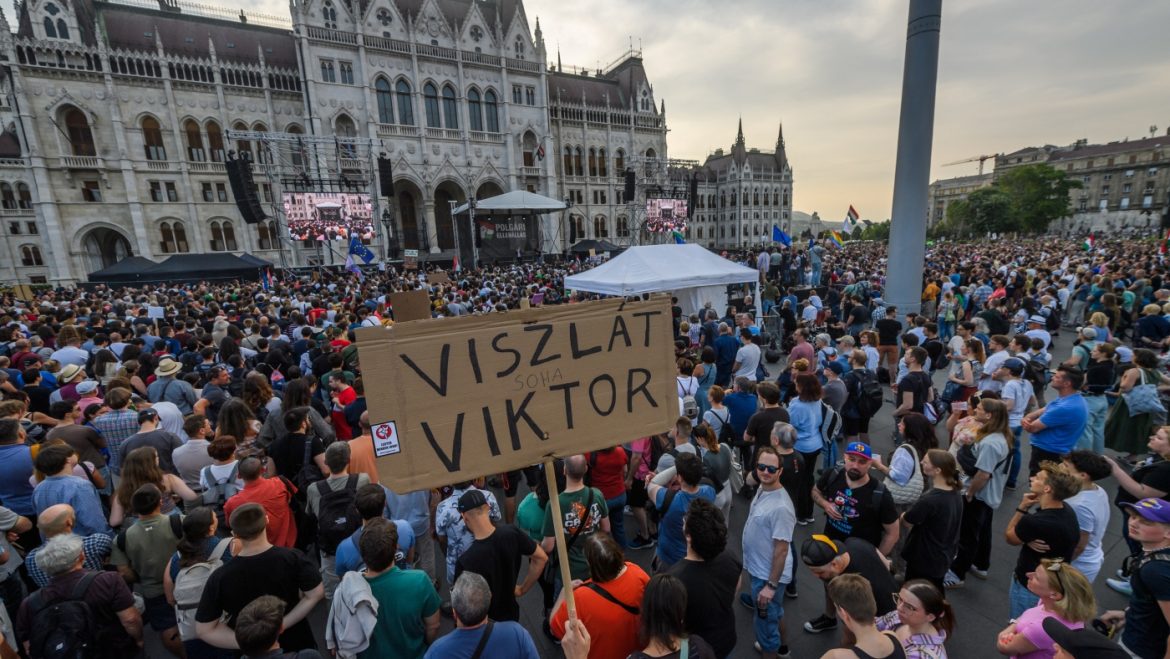Hungary’s Rising Tide of Resistance: A Detailed Analysis of the Recent Anti-Orbán Protests
The recent mass protests in Hungary, with approximately 15,000 participants gathering in Budapest, signify a critical surge in the population’s resistance against the government of Prime Minister Viktor Orbán. This movement, orchestrated as a response to legislative changes and constitutional amendments passed earlier this year, marks a defining moment in Hungary’s contemporary political landscape. It demonstrates not only public dissatisfaction with Orbán’s policies but also a broader pushback against escalating authoritarian measures.
Background and Context: Orbán’s Consolidation of Power
Viktor Orbán’s tenure as Hungary’s Prime Minister has been characterized by a steady transformation of the country’s democratic structures. Orbán and his Fidesz party have pursued what they describe as an “illiberal democracy,” often involving centralization of authority, curtailment of opposition powers, and skepticism towards the European Union. The recent legislative activities highlighted in the protests include a contentious law passed in March, followed by a constitutional amendment in the ensuing month. These measures are widely perceived by critics as tools to consolidate Orbán’s grip on power, restricting freedoms and weakening checks and balances.
This political environment has fostered growing unease among citizens and prominent public figures alike, fueling a collective determination to resist perceived authoritarianism. The use of legal frameworks to limit opposition voices, combined with aggressive rhetoric targeting dissenters, has compounded fears about the shrinking space for democratic contestation within Hungary.
The Protest: A Collective Declaration of Resistance
The massive protest in Budapest’s central square was more than a mere demonstration; it symbolized the formal declaration of “civil resistance” against the Orbán government. Organizers framed the event as the commencement of a broad resistance movement, reflecting a significant escalation from isolated complaints to organized, large-scale opposition.
Notably, the protest drew support from a diverse coalition of societal actors, including writers, actors, musicians, journalists, and other public intellectuals, indicating a widespread cultural and civic engagement with the movement. The participation of nearly two dozen respected public figures lent the protest both legitimacy and visibility, amplifying its message across Hungary and internationally.
The protesters’ primary grievances centered on the government’s recent legal maneuvers perceived to undermine democratic norms and civil liberties. This includes concerns about laws enabling governmental overreach, constitutional amendments that may entrench authoritarianism, and policies that threaten minority rights and judicial independence.
Broader Implications: Resurgence of Civil Society and Democratic Values
These protests represent more than spontaneous political dissent; they reveal an awakening of civil society willing to mobilize in defense of democratic principles. Hungary’s historical experience with repression and its vibrant traditions of cultural activism provide fertile ground for such a spirited response.
The momentum gained through these organized demonstrations underscores a potential turning point. Should the resistance movement maintain cohesion and expand its influence, it could reassert democratic accountability in Hungary’s political system. Moreover, it sends a strong signal to domestic and international observers that a sizeable portion of the Hungarian population rejects the trajectory toward authoritarianism envisioned by Orbán.
Challenges and Prospects for the Opposition Movement
Despite the energy fueling the protests, the opposition faces significant challenges. Orbán’s government retains strong institutional control and extensive influence over media narratives, which complicates efforts to reach wider audiences and enact change through existing political mechanisms.
Furthermore, the opposition must navigate Hungary’s polarized political climate, where supporters of Orbán remain steadfast, raising the stakes for both sides. Fragmentation within opposition ranks could also undermine long-term movement effectiveness, highlighting the need for strategic unity and clear messaging.
The involvement of legal figures such as Peter Magyar—who has gained prominence through his role in exposing political scandals—demonstrates the opposition’s attempt to leverage both grassroots mobilization and institutional accountability mechanisms. This multifaceted approach may be crucial in confronting the entrenched power structures.
Conclusion: A Defining Moment for Hungarian Democracy
Hungary’s recent large-scale protests reflect a community galvanized against the authoritarian direction of its leadership. The sheer scale of participation and the diversity of supporters indicate that resistance is no longer marginal but has become a central component of Hungary’s political discourse. While the outcome remains uncertain, this burgeoning movement exemplifies the enduring human desire for democratic freedoms and governmental accountability.
This episode may well mark the beginning of a sustained struggle to reclaim democratic institutions in Hungary, providing a beacon of hope for advocates of democracy both within the nation and beyond its borders. The unfolding events warrant close attention, as they hold significant implications for the future of governance, civil rights, and the rule of law in Hungary.


